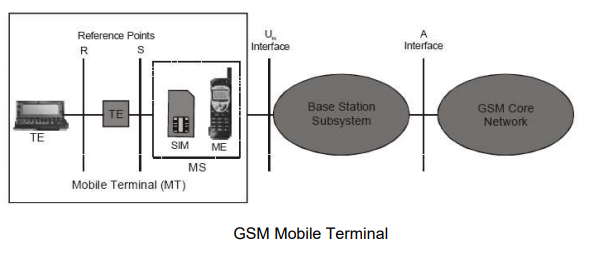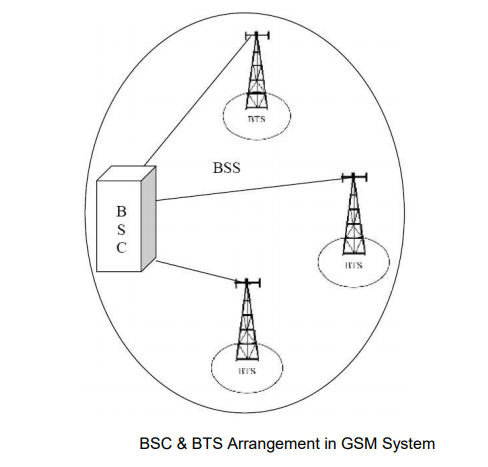Mobile Station
An MS is used by a mobile subscriber to communicate with the mobile network. Several
types of MSs exist, each allowing the subscriber to make and receive calls.
Manufacturers of MS offer a variety of design and features to meet the need of different
market.
The mobile station consists of:
1. Mobile Equipment (ME)
2. Subscriber identity module (SIM)
GSM Mobile Terminal
GSM Mobile Terminal
"Cellular phone without SIM card"
The mobile equipment has a unique international mobile equipment identity (IMEI)
which is used by EIR. The numbers of GSM terminal types are defined within the GSM
specification. They are distinguished primarily by their power output rating. The range or
coverage area of an MS is dependent on the output power capabilities and
consequently different ranges. For example, hand held MSs have a lower output power
and shorter range than car-installed MSs with a roof mounted antenna
SIM (Subscriber Identity Module)
SIM card used in phones are smart processor cards. It possesses a processor and a small memory. The SIM stores permanent and temporary data about the mobile, the subscriber and the network. It contains a serial no, PIN, PUK (Pin Unblocking Key), an authentication key (Ki), IMSI (International Mobile Subscriber Identity). The SIM can be plugged into any GSM mobile terminal. This brings the advantages of security and portability for subscriber. Example: Subscriber A's mobile terminal may have been stolen. However, A's own SIM can be used in another person's mobile terminal and the calls will be charged to subscriber A.
Functions of MS
Function of MS is transmission of signal from MS to BTS (using uplink) and reception of signal from BTS to MS (using down link).
BSS (Base Station Subsystem)
BSS contains two components:
1. BTS
2. BSC
BTS (Base Transceiver Station)
It comprises all radio equipments (e.g.: antenna, signal processing & amplifier required for transmission).It is placed in the center of a cell. Its transmitting power defines the size of a cell. It is connected to MS via Um interface and connected to BSC via Abis Interface. It manages the radio resources for BTSs. It handles & handover the radio frequency, radio channel set up from one BTS to other.
BSC (Base Station Controller)
It connects the BTS and MSC of NSS. It manages radio resources for one or more BTS. It handles and Handover the radio frequency, radio channel setup from one BTS to another.



Leave Comment